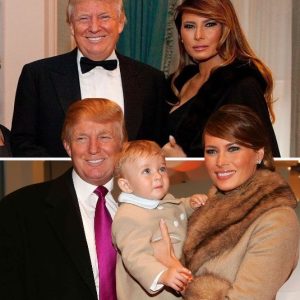On June 11, President Donald Trump and First Lady Melania Trump attended a performance of Les Misérables at the John F. Kennedy Center for the Performing Arts, marking the president’s first return to the venue since his administration reshaped its leadership and programming. Their arrival immediately set the tone for a charged evening, with a mixture of applause, chants, and boos echoing through the theater. Some attendees cheered, waving American flags and chanting “U.S.A.,” while others expressed disapproval vocally, creating an atmosphere of polarized reactions. The first couple’s presence in the presidential box made the performance not only a cultural event but a flashpoint for discussion about politics, power, and public sentiment surrounding the arts.
The response inside the theater reflected deep societal divisions, as chants of support were met by pointed jeers and occasional profanity. At intermission, the crowd’s energy underscored the tension; applause and boos ricocheted back and forth as Trump acknowledged the mixed reception with his familiar three-pump fist gesture. Reporters and media outlets described the scene as a microcosm of America’s cultural and political polarization, where even a musical performance became a venue for symbolic expressions of approval or dissent. Attendees’ reactions were framed less by the musical itself than by the president’s controversial presence, highlighting how political context can transform artistic events into platforms for broader commentary.
Even before the performance, the evening drew attention for its cultural and symbolic undertones. Some members of the Les Misérables company reportedly opted out of attending the show, citing concerns about participating in an event with a sitting president in the audience. Meanwhile, the presence of drag performers seated in tickets donated by critical patrons added another layer of subtle protest, emphasizing the ways in which theatergoers and performers used seating arrangements as a statement about inclusivity and resistance to what Trump has described as “woke” programming. These dynamics underscored how theater spaces can act as both literal and symbolic stages for contemporary cultural debates, with casting and attendance decisions carrying significance beyond the script.
The juxtaposition of Les Misérables—a musical about the oppressed rising against authoritarian power—with current political events added a striking layer of irony to the evening. The performance coincided with federal deployments to manage protests in Los Angeles, prompting commentators and political observers to highlight the stark contrast between the play’s narrative and real-world headlines. Additionally, Trump’s appearance functioned as a fundraising effort, as the president reported the event raised over $10 million, coinciding with his administration’s recent conservative overhaul of the Kennedy Center’s leadership. While critics questioned whether subscription declines and altered programming reflected the impact of these changes, Kennedy Center officials noted that new campaign and subscription options were only beginning to roll out, complicating interpretations of the evening’s cultural and financial significance.
Beyond politics and policy, social media amplified the night through the viral “thumb-hold” moment as Trump and Melania left the theater, sparking widespread commentary on their body language. The incident became part of a larger narrative about the couple, where small gestures are endlessly scrutinized and meme-ified, reinforcing how the Trumps’ public appearances consistently generate layered, often contradictory interpretations. Overall, the evening at the Kennedy Center operated as a Rorschach test: supporters celebrated a president engaging with a marquee cultural institution and generating funds, while critics highlighted the ironic dissonance between the musical’s themes and contemporary political actions. In the end, the event exemplified how live theater can provoke thought, debate, and reflection far beyond the stage, serving as a mirror to societal divides and the intersection of art and politics.




